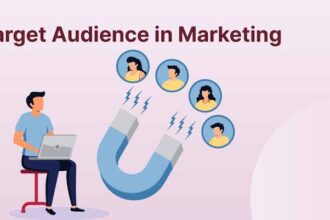One of the most common pitfalls for businesses, especially small ones, is failing to precisely answer a fundamental question: “Who are we trying to serve?” This is where the power of Target Audience Identification comes in.
It’s the bedrock of every successful marketing strategy, product development, and customer relationship.
Learning how to define and truly connect with the right customers for your business isn’t just a marketing tactic; it’s a strategic imperative that can transform your efforts from guesswork into guaranteed growth.
Ready to stop guessing and start growing? Let’s master the art of Target Audience Identification and unlock your true market potential!
Why a Laser Focus on Target Audience Identification Matters
Imagine trying to sell ice to an Eskimo, or sunscreen in a snowstorm. Sounds ridiculous, right? Yet, many businesses make similar mistakes by not clearly understanding their ideal customer. Without precise Target Audience Identification:
- You Waste Resources: Every naira spent on marketing to the wrong people is a naira lost.
- Your Message Gets Lost: Generic messages appeal to no one specifically.
- Product Development Stalls: You build features no one needs, or miss out on what they truly desire.
- Customer Loyalty is Weak: When customers don’t feel truly understood, they’ll quickly jump ship.
Conversely, a clear understanding of your target audience leads to: higher ROI, deeper customer loyalty, stronger brand reputation, and more effective marketing campaigns.
Phase 1: Identifying Your Target Audience (The “Who”)
This is where you put on your detective hat and go beyond assumptions.
1. Define Your Solution: Who Needs What You Offer?
Start by looking inward at your product or service. What problem does it solve? What unique value does it provide? Now, think about the kind of person or business that experiences this problem most acutely and would genuinely benefit from your solution.
- Action: Brainstorm scenarios where your product/service is indispensable. Who is in those scenarios?
2. Uncover Deep Insights: Market Research Deep Dive
This is the core of Target Audience Identification. Go beyond surface-level demographics and dig into psychographics and behavior.
- Demographics: Age, gender, income, location, education, occupation, marital status. (e.g., “Young professionals, 25-35, living in urban areas like Lagos or Abuja, earning ₦250k+ per month.”)
- Psychographics: Values, interests, lifestyle, attitudes, personality traits, aspirations, pain points, motivations, fears. (e.g., “Value convenience and time-saving, interested in personal development, fear stagnation in their careers, motivated by social recognition.”)
- Behavioral Data: Buying habits, product usage, website interactions, brand loyalty, previous purchases. (e.g., “Frequent online shoppers, prefer mobile apps, respond well to email offers, loyal to brands that offer excellent customer service.”)
- Tools: Use Google Analytics, social media insights, customer surveys, interviews, industry reports, and government census data.
3. Analyze Your Competition: Who Are They Serving (or Missing)?
Examine your competitors. Who are their customers? What audiences are they neglecting?
- Action: Look at their social media engagement, review sites, and marketing campaigns. Are there segments they’re not reaching effectively? Can you offer a superior solution or experience to a subset of their audience? This helps refine your Target Audience Identification.
4. Build Buyer Personas: Give Your Ideal Customer a Face
Once you have data, create 1-3 detailed buyer personas. These are semi-fictional representations of your ideal customers based on your research.
- Include: A name, job title, demographics, psychographics, goals, challenges, how they consume information, and even a photo.
- Example Persona: “Amara, The Ambitious Analyst”
- Age: 29
- Location: Lagos
- Occupation: Junior Data Analyst
- Goals: Get promoted, learn new skills, save time.
- Challenges: Long work hours, limited time for self-study, wants convenient solutions.
- Values: Efficiency, professional growth, quality.
- Online Habits: Active on LinkedIn, reads tech blogs, uses productivity apps.
- Why it helps: Personas make your Target Audience Identification tangible. You’re no longer marketing to a vague group, but to a specific person.
Phase 2: Serving Your Target Audience (The “How”)
Now that you know who you’re talking to, it’s time to tailor how you reach them.
1. Connect Your Messaging: Speak Their Language
Your marketing messages must resonate directly with your identified audience.
- Action: Use their language, address their specific pain points, and highlight how your product/service solves their problems. If Amara fears stagnation, your message might be “Unlock career growth with our time-saving data analytics course!”
2. Reach Them Effectively: Choose the Right Channels
Don’t market everywhere. Go where your target audience spends their time.
- Action: If your audience is professionals like Amara, LinkedIn and industry-specific blogs are key. If they’re Gen Z, TikTok and Instagram might be more effective. Allocate your marketing budget where it will have the most impact.
3. Innovate Continuously: Develop Relevant Products & Services
Your initial Target Audience Identification isn’t a one-and-done task. Their needs evolve, and so should your offerings.
- Action: Continuously gather feedback, conduct surveys, and monitor market trends. Use these insights to refine existing products or develop new ones that perfectly fit your audience’s evolving desires.
4. Foster Relationships & Community: Build Loyalty Beyond Sales
True loyalty comes from feeling understood and valued.
- Action: Engage with your audience beyond direct sales. Create content they find valuable, build online communities (e.g., a Facebook group, a LinkedIn discussion forum), offer exclusive insights, and provide exceptional customer service. This builds trust and transforms customers into advocates, leading to sustainable business growth.
Common Pitfalls to Avoid in Target Audience Identification
- Being Too Broad: “Everyone” is not a target audience.
- Making Assumptions: Don’t rely on gut feelings alone; always back it up with data.
- Not Evolving: Your audience’s needs can change. Revisit your personas regularly.
- Ignoring Negative Feedback: This is crucial for understanding unmet needs or pain points.
Mastering Target Audience Identification is the ultimate shortcut to effective marketing and sustainable business growth.
It allows you to focus your energy, resources, and creativity on the people who truly matter to your business.
By understanding your ideal customer deeply, you can tailor your entire approach, ensuring every marketing effort lands precisely where it needs to.






